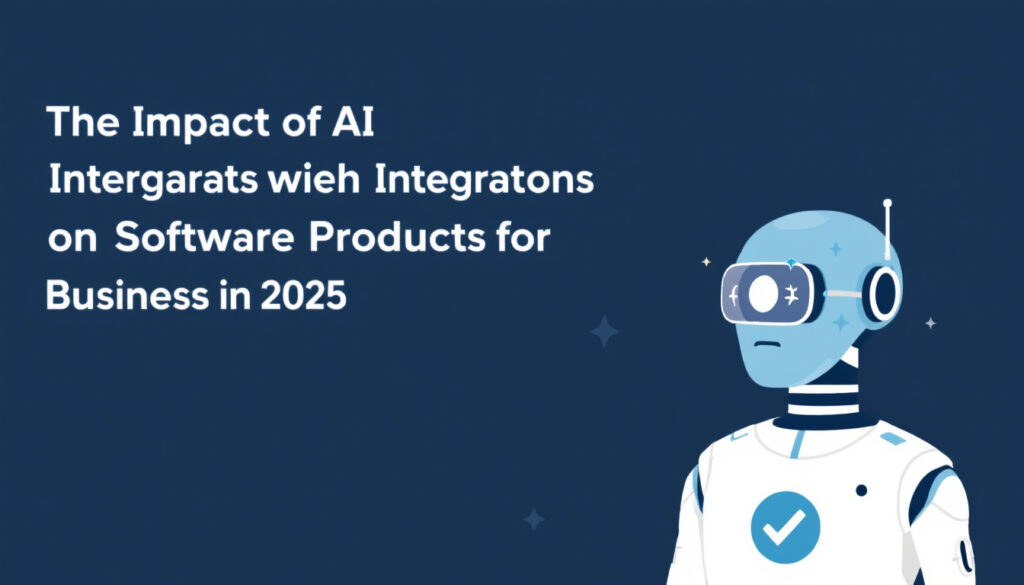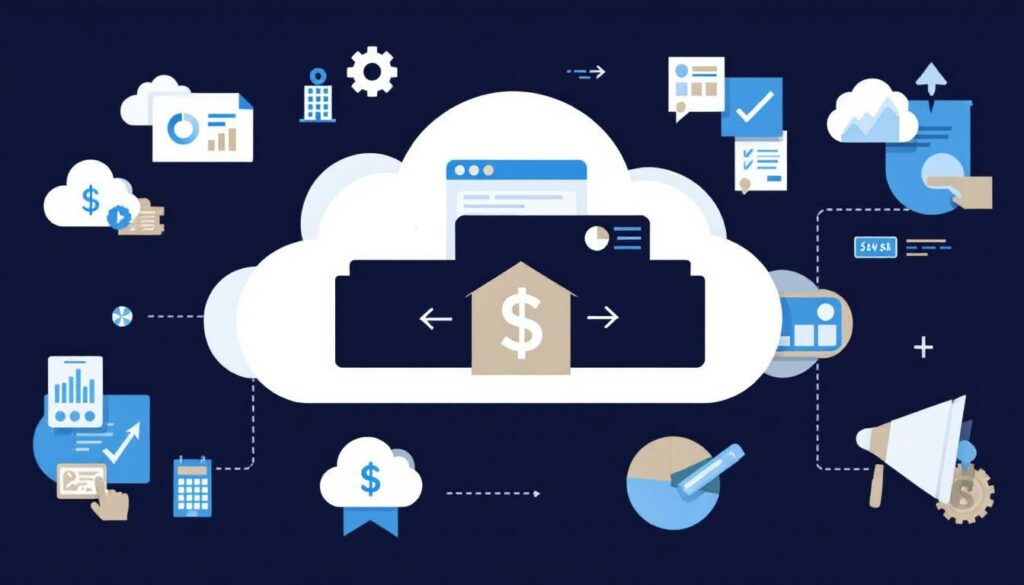The Impact of AI Integrations on Business Software Products in 2025
AI integration refers to embedding artificial intelligence tools into software products to boost efficiency, accuracy, and decision-making. The year 2025 stands out as a turning point, with major advancements making AI more accessible and adaptable to business needs “Impact AI Business Software”. These changes require IT managers, developers, and business leaders to adjust their processes and expectations. Understanding this shift is key for those aiming to stay competitive and responsive in a changing software environment. Organizations that keep pace with AI adoption will see significant benefits in productivity and performance. How AI Integrations are Transforming Business Software in 2025 Photo by Andrew Neel In 2025, artificial intelligence has moved from being an aspiration to a core part of business software. AI features—driven by machine learning, natural language processing, and computer vision—are deeply embedded in tools from customer relationship management (CRM) to enterprise resource planning (ERP) and workplace communication platforms. These technologies bring measurable benefits in automation, decision support, and real-time data analysis. The following subsections outline the most remarkable changes delivered by AI integrations this year. Automation and Productivity Gains AI-powered automation has reshaped how organizations approach repetitive tasks and workflows. In CRM solutions, AI agents can now manage customer inquiries, update records, and schedule follow-ups without human input. ERP systems use AI to streamline inventory, generate orders, and reconcile accounts in real time. Communication platforms route requests, manage schedules, and even summarize meetings automatically. The immediate benefits are clear: According to recent studies, integrating AI automation into daily routines increases individual productivity and empowers teams to deliver results faster. Advanced AI features in software are increasingly accessible to businesses of every size, as detailed in this overview of workplace AI in 2025. Companies are moving beyond basic task management into a phase where AI tools boost organizational efficiency at scale. For those interested in exploring top solutions, curated lists of the best AI productivity tools in 2025 show how automation is being adopted across industries. Personalization and Smart Decision-Making Machine learning and NLP have made business software more responsive and adaptive. In CRM platforms, AI analyzes past customer interactions, preferences, and buying behaviors to suggest personalized recommendations for sales and service teams. ERP systems use predictive analytics to guide managers on supply chain decisions, while communication platforms tailor information delivery based on user activity and context. Key features include: These enhancements improve both the customer experience and operational agility. Decision-makers benefit from continuous feedback, making it easier to identify trends and respond to challenges promptly. As AI becomes embedded in daily operations, businesses can achieve greater accuracy and speed while minimizing guesswork. AI-Powered Data Analysis and Business Insights Data is now the bedrock of competitive advantage. AI tools process vast datasets in business software, finding patterns and generating insights that manual analysis would miss. CRMs track customer sentiment in written communications, ERPs forecast demand by combining economic data with internal records, and communication systems flag emerging topics in company-wide discussions. Modern AI analytics enable: Recent industry research, including PwC’s 2025 AI Business Predictions, shows that organizations using advanced AI analytics experience measurable growth in strategic planning, customer engagement, and cost management. The shift towards integrated AI analysis turns raw data into a powerful driver of business value. To gain deeper understanding of transforming business processes, organizations can review resources on automation and software strategies that highlight real-world use cases and technology adoption paths. AI is now an everyday part of business software, and the trend will only accelerate as these features mature. Challenges and Limitations of AI-Powered Software for Businesses Despite the many advantages artificial intelligence brings to business software, adopting AI comes with significant challenges. As more organizations in 2025 add AI features to products and platforms, new and ongoing issues have come into sharper focus. The main concerns fall into three areas: compatibility gaps, ethical and security risks, and shortages in skills and preparedness. Integration and Compatibility Issues Photo by Google DeepMind AI modules often require more memory, faster processing, and dedicated data pipelines compared to traditional software components. Integrating these into current business systems—many of which rely on older technologies—can be complex and costly. IT teams face a variety of technical issues, including: Many businesses find that addressing these integration barriers demands significant upgrades or even redesigns. The process of integrating AI tools into established workflows, especially in organizations with long-standing systems, increases the risk of breaking existing functionality or introducing new bugs. For a related discussion, see the coverage on challenges of maintaining clean code in expanding systems and how integration pressures can complicate codebase quality. Ethical, Security, and Privacy Concerns Integrating AI into business software introduces new privacy risks and ethical considerations. AI models can expose or misuse sensitive business data if not properly managed. Security teams must address: Complying with regional and international regulations is a growing challenge. With rules like the General Data Protection Regulation (GDPR) shaping practices worldwide, businesses must ensure that AI-powered products manage personal data securely and ethically. Enterprises may need specialized risk assessments and ongoing auditing to stay ahead of new threats. Resources such as the NIST AI Risk Management Framework further detail how organizations can define standards and manage vulnerability. Talent Shortages and Organizational Readiness A shortage of skilled professionals continues to slow AI adoption. Building, tuning, and maintaining AI models require knowledge in machine learning, data engineering, and domain-specific fields. Most companies face issues in: Businesses that want to take advantage of AI must invest in training, upskilling, and, where needed, external partnerships. Focusing on organizational readiness can ease the transition and help avoid disruption. Adjusting recruitment approaches and prioritizing continuous learning are key for long-term success. Those interested in organizational change strategies should explore thought leadership and frameworks in leading business and technology publications, such as the insights shared through Harvard Business Review: How to Build an AI-Ready Culture. Addressing these challenges carefully is essential for extracting value from AI-powered software while avoiding unintended setbacks. Best Practices for Successful AI Integration in Business Software










